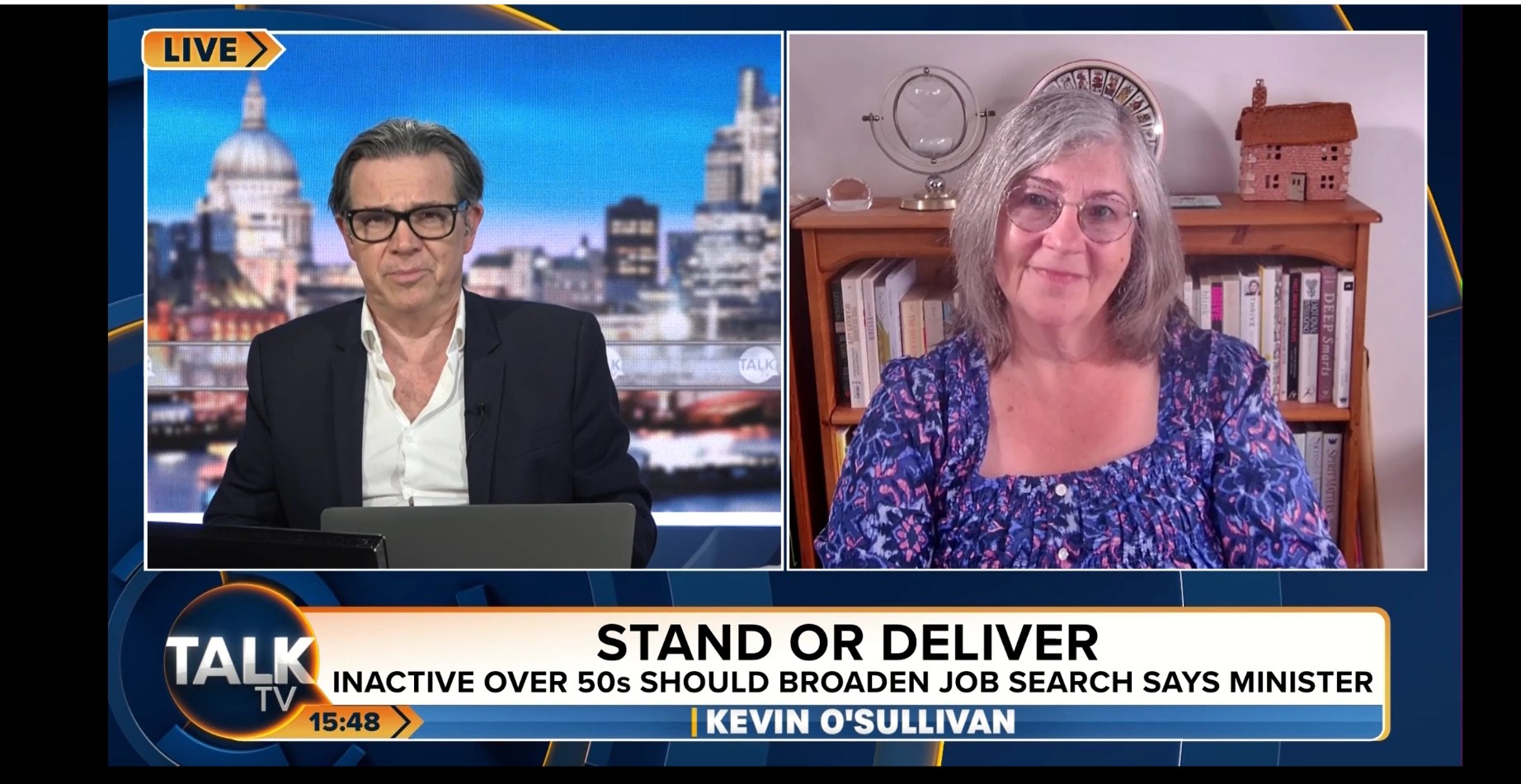As a career psychologist, I also undertake some recruitment consultancy. I need to keep up to date with latest trends. How many of these are you aware of?
Data based decision making
Too many recruiters collect data but fail to use it effectively. Recruiters are beginning to identify the words and phrases that attract candidates; the interview questions that differentiate the top performers; checking the effectiveness of references in predicting performance; failure rate (the average of people not staying in the job is 46%!) and which single factor has the highest impact on hiring success.
As a job seeker, make sure that your marketing material – your CV and LinkedIn profile – use the words that will attract the recruiter. You can do this through a careful review of the advert and other company literature and also being clear on what makes you different. You don’t want to be a clone of everyone else.
Referrals will become 50% of all hiring
The best firms get 50% of new recruits from employee referrals. Companies will be explaining to their staff on how to make good connections and who to refer. And this will not just be with their close business associates but their broader network. HR can give feedback to employees on the quality of their referrals and to make sure they can accurately assess the quality of their work and skills.
As a job seeker you need to expand your network, but it’s not just connecting to more and more people, but making sure you have a relationship with them and they understand where your strengths lie. Talking with them but also creating long posts on LinkedIn (like this one!) can help, so too can sharing relevant articles and web links so you are seen as a thought leader. Let people know what you are looking for and why you will be ideal for a particular role. When you see a job advertised, go through your network and see who you know that works for the particular organisation.
Measuring on the job performance of the new hire
Recruiters will be monitoring new recruits and dividing them between high performers and the below average performers. Then to look for the traits that the high performers share. This is part of job analysis that occupational psychologists have done for years. But alas, many organisations have not wanted to invest in this work.
As a job seeker you can do your research and identify the key traits of star performers and see how you measure up. When you get the job you can also seek feedback, perhaps getting support from a mentor to get you into the high performer group.
Increased speed of hire
Recruitment can be slow, months can go by with long drawn out selection processes and the best applicant may have got an offer elsewhere. But it can also impact on the bottom line if a vacancy results in less revenue generation. It is not true that the longer it takes to make a decision the better the quality of the hire. Too often the delay is because the process hasn’t been carefully planned and too many people needing to be involved and are slow to respond. Companies may choose to rank the speed of decision making internally to encourage people to speed up, probably through the embarrassment of being at the bottom of the list.
This is outside our control, there is little we can do as candidates, but we can ask for when we will hear and follow up accordingly. We can also let the recruiter know that we have other applications progressing.
Applications to be done via mobile
Not everyone has a laptop, and we do far more activity on our phones and tablets. Recruitment must be possible by these means, to enable us to apply for jobs and accept job offers using mobile technology. Interviews could be scheduled online. Texting can also be a great means of getting in touch with candidates.
We should all have an up-to-date CV accessible to forward via our phones/tablets.
The costs of a bad candidate experience
If an applicant feels that the recruitment process was poor they will tell others, in person and via social media, and may even encourage others not to buy the organisations products. Recruiters can contact past applicants and new hires and get feedback about what they liked/ disliked about the process. They could also use a mystery shopper process. Glass Door can also provide feedback.
As a company will look for details of us online we too can find out more about the company we may consider working with. Seek feedback from ex-employees via LinkedIn and use Glassdoor.com
Forward looking approach to recruiting
When metrics are used they usually focus on what has happened in the past. Recruiters need to focus more on the future, identifying future needs and possible turnover. This can lead to a situation being managed so an employee stays. Google uses metrics to predict which members of staff may leave because they feel ‘under-used’.
If you are unhappy in your job, it’s always worth talking with your manager or HR to see what can be done. This works better if you are well recorded, if you are seen as a low performer they may encourage you to leave.
Recruiting innovators
Did you know that an employee who had high levels of innovation can produce at least 10 times more than the average employee? Of course it depends on the job but creative people are more likely to challenge the status quo and make radical changes rather than minor improvements. Recruiters may seek out people with these personal qualities. They must also be aware that innovators may want to customise their job and be encouraged and supported to take risks.
Do you consider yourself innovative and creative? Make sure your online programme makes this clear, and take a few risks for a profile that stands out.
Job descriptions need to be clearer
Job descriptions tend to be either dull or don’t fully cover the job. The dull ones put people off and the others are misleading and lead to an unhappy new hirer. Recruiters need to review their job ads and see how they compare to other job ads. Remove the names and ask people to compare and see which they find more interesting or exciting. Job ads can then use more encouraging words to get people to apply. But you can’t ‘sex things up’ too much, it has to be accurate. The video job description might be clearer and more interesting and employers can use more creative approaches to advertise the job.
Too many people have taken on a job and then found the reality so very different. Certain elements of the job were not discussed at all. We need to be willing to read through the detailed and boring to find a good job but also be aware that some ads may be ‘sexed up’.
Video will become prominent in all recruitment messaging
Video is used more frequently and can be used by companies as part of their publicity and recruitment. For example, Deloitte’s encouraged their employees to shoot short videos on their phones to show the fun they have in the company. Video can also be used to send a personal message to desirable candidates, to describe the job as part of the job ad material, and to make job offers. Ads can also be shown on TV, and on social media channels to raise interest in the company.
We too can use video, sometimes we may be asked to make a video application other times we could choose to shoot a short video (< 1 minute). You will want to make sure that you are comfortable with this, so do some practice videos, and make sure the background is work relevant (avoid the unmade bed!).
Changes in convincing people to apply
Recruiters and head hunters will seek out ‘talent’ but not all of these will be interested in the vacancy, so there is a key sales element, persuading us to want to apply. When they have recruited someone they will want to see which techniques were most successful. The recruiters will be doing deeper research, finding out what they can about us (if they are interested in us) and seeing how they can use this to convince us.
We need to be aware that a recruiter may use effective techniques to try and persuade us, and we must ensure that we aren’t persuaded to go for something that isn’t right for us, that just leads to unhappiness.
Anonymous CV Screening and Blind Interviewing
There is a lot of unconscious bias in recruitment, especially assumptions made of someone’s name and education. Organisations such as Google and Deloitte are removing information that is not proven as a valid predictor. Phone interviews can avoid visual biases, and voice biases can be reduced by using written questions (although this may then discriminate against those who are less eloquent).
This will help many of us, particularly if your name is unusual and you haven’t been to a top university. If you get asked for a phone interview think of the positives – you can have notes you can refer to but don’t be heard shuffling papers.
I’ve been thinking about this myself and wondering if my days as an interviewer are numbered when the questions could be asked and then assessed using technology.
So how many of these trends are you aware of? Will you be making any changes
Denise Taylor, Career Psychologist and Award Winning Career Coach with www.amazingpeople.co.uk
My next book, Find Work at 50+ will be published on 1 March 2016




